Abstract
OBJECTIVES--To study the prevalence of byssinosis and other respiratory abnormalities in workers exposed to cotton dust in Guangzhou in two factories that processed purely cotton. METHODS--All the 1320 workers exposed were included. The controls were 1306 workers with no history of occupational dust exposure. Total dust and inhalable dust were measured by Chinese total dust sampler and American vertical elutriator respectively. A World Health Organisation questionnaire was used. Forced vital capacity (FVC) and forced expiratory volume in one second (FEV1) were measured by a Vitalograph spirometer. RESULTS--The median inhalable dust concentrations ranged from 0.41 to 1.51 mg/m3 and median total dust concentrations from 3.04 to 12.32 mg/m3. The prevalence of respiratory abnormalities in the cotton workers were (a) typical Monday symptoms 9.0%; (b) FEV1 fall by > or = 5% after a shift 16.8%; (c) FEV1 fall by > or = 10% after a shift 4.2%; (d) FEV1 < 80% predicted 6.1%; (e) FEV1/FVC < 75% 4.0%; (f) cough or phlegm 18.2%; (g) chronic bronchitis 10.9%; and (h) byssinosis, defined by (a) plus (b) 1.7%. With the exception of (d), most of the prevalences increased with increasing age, duration of exposure, and cumulative inhalable dust exposure. No increasing trends of respiratory abnormalities were found for current total dust, inhalable dust, and cumulative total dust concentrations. Compared with controls, after adjustment for sex and smoking, with the exception of (d), all the pooled relative risks of respiratory abnormalities were raised for cotton exposure. CONCLUSION--It is concluded that cumulative inhalable cotton is likely to be the cause of byssinotic symptoms, acute lung function decrements, cough, or phlegm, and chronic bronchitis.
Full text
PDF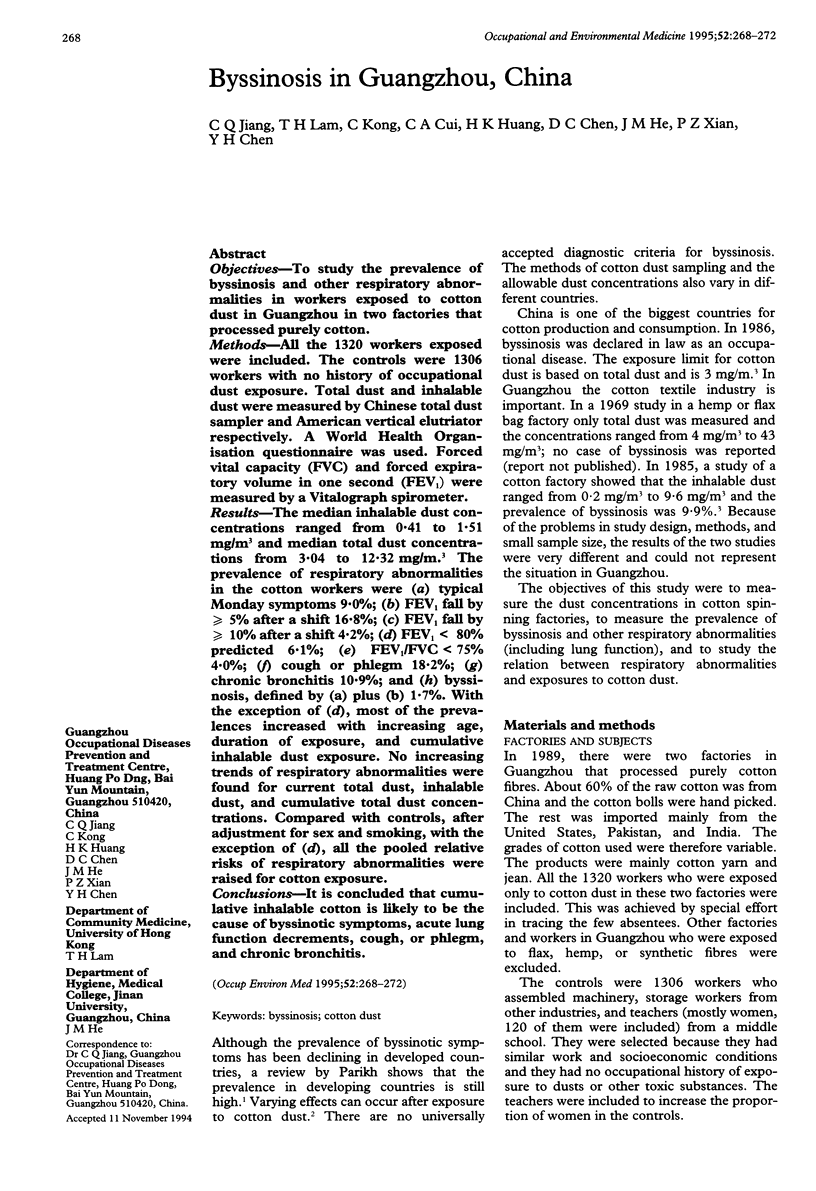
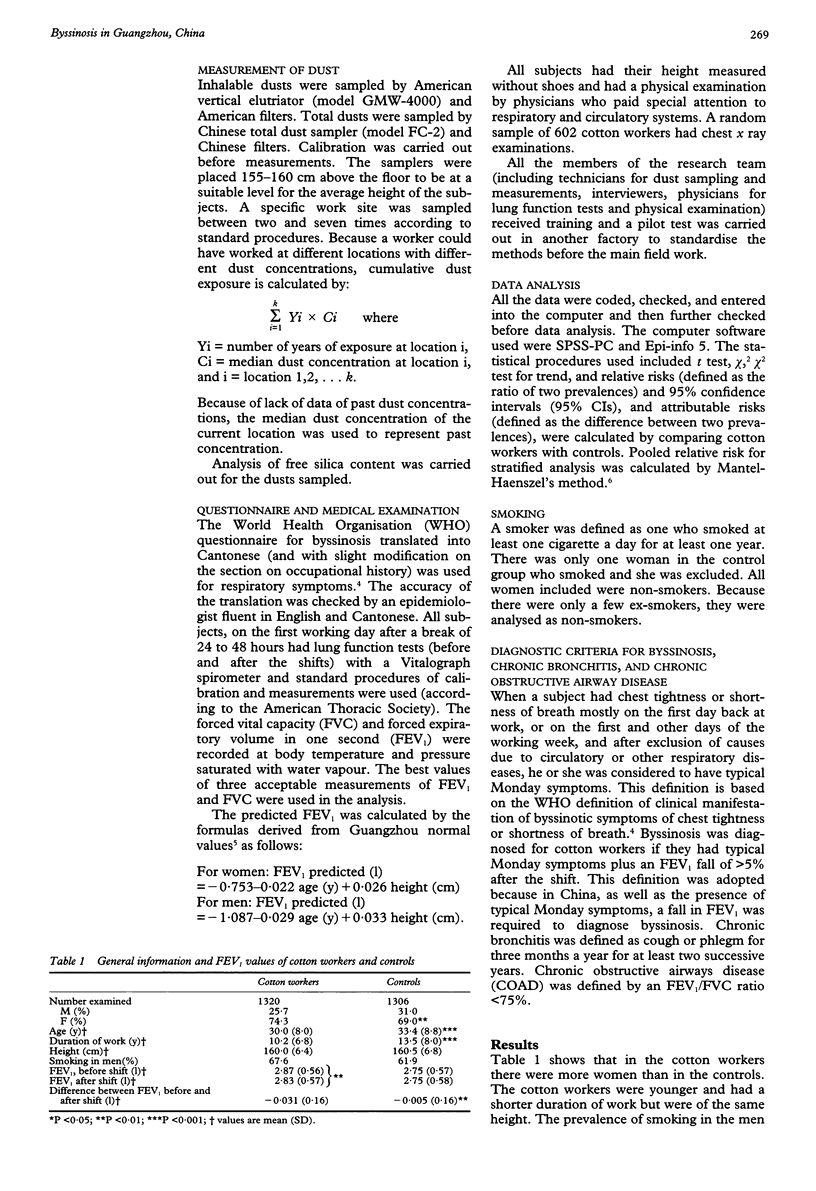
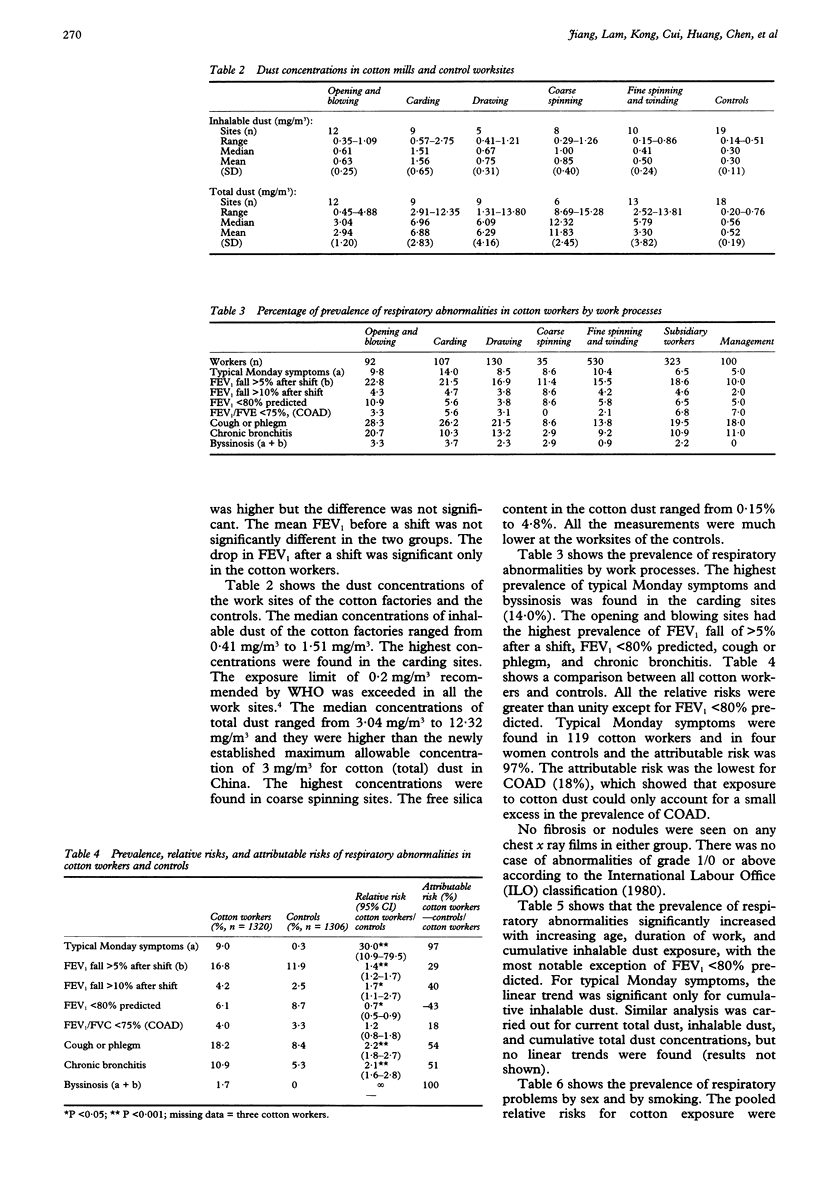
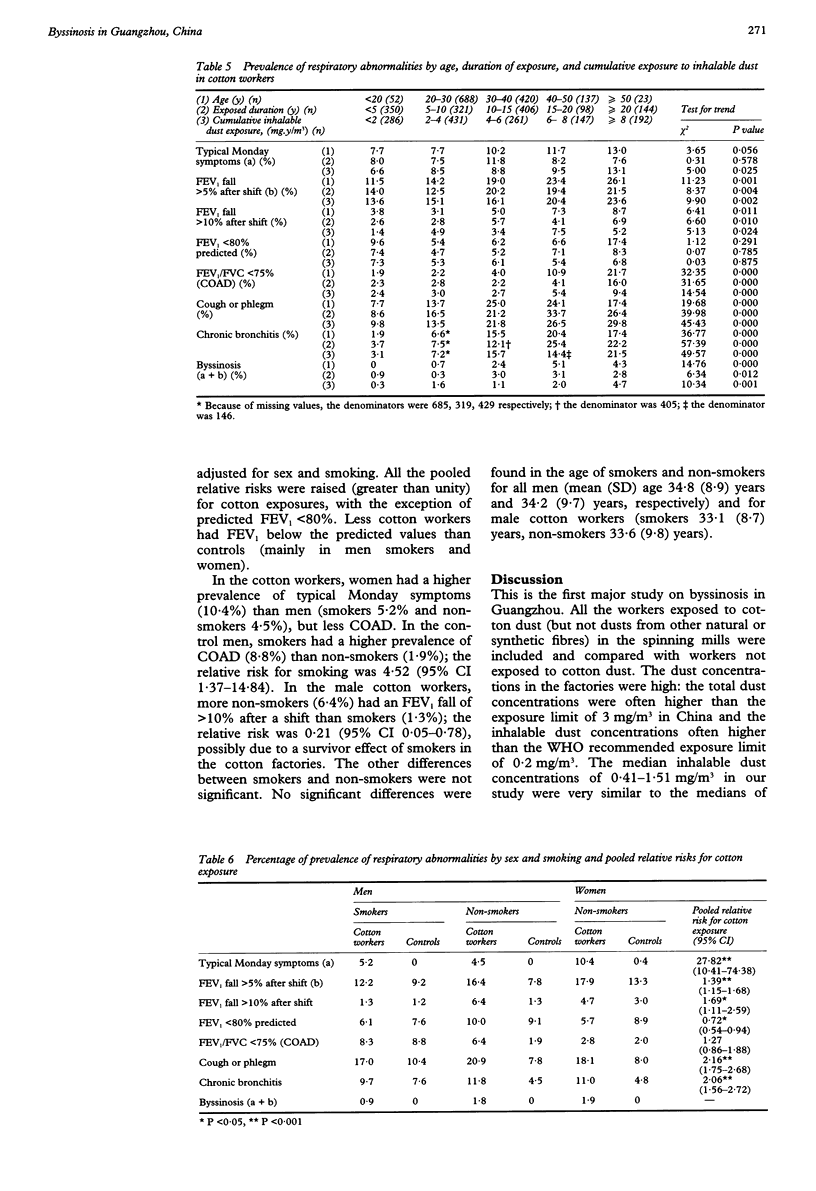
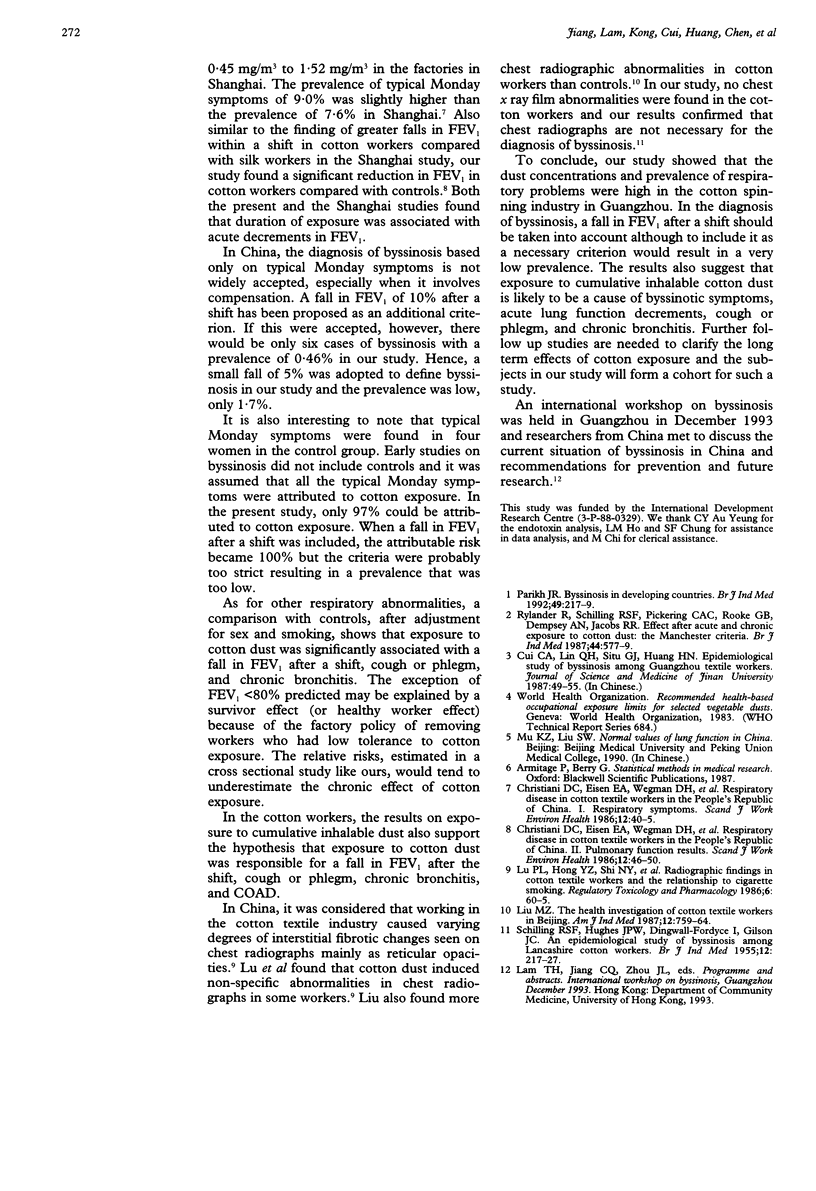
Selected References
These references are in PubMed. This may not be the complete list of references from this article.
- Christiani D. C., Eisen E. A., Wegman D. H., Ye T. T., Gong Z. C., Lu P. L., Dai H. L. Respiratory disease in cotton textile workers in the People's Republic of China. II. Pulmonary function results. Scand J Work Environ Health. 1986 Feb;12(1):46–50. doi: 10.5271/sjweh.2175. [DOI] [PubMed] [Google Scholar]
- Liu M. Z. The health investigation of cotton textile workers in Beijing. Am J Ind Med. 1987;12(6):759–764. doi: 10.1002/ajim.4700120615. [DOI] [PubMed] [Google Scholar]
- Lu P. H., Hong Y. Z., Shi N. Y., Zhang W. D., Dai C. S., Huang J. W., Qin X. X., Liu M. Z., Tong D. H. Radiographic findings in cotton textile workers and the relationship to cigarette smoking. Regul Toxicol Pharmacol. 1986 Mar;6(1):60–65. doi: 10.1016/0273-2300(86)90039-5. [DOI] [PubMed] [Google Scholar]
- Parikh J. R. Byssinosis in developing countries. Br J Ind Med. 1992 Apr;49(4):217–219. doi: 10.1136/oem.49.4.217. [DOI] [PMC free article] [PubMed] [Google Scholar]
- Rylander R., Schilling R. S., Pickering C. A., Rooke G. B., Dempsey A. N., Jacobs R. R. Effects after acute and chronic exposure to cotton dust: the Manchester criteria. Br J Ind Med. 1987 Sep;44(9):577–579. doi: 10.1136/oem.44.9.577. [DOI] [PMC free article] [PubMed] [Google Scholar]
- SCHILLING R. S., HUGHES J. P., DINGWALL-FORDYCE I., GILSON J. C. An epidemiological study of byssinosis among Lancashire cotton workers. Br J Ind Med. 1955 Jul;12(3):217–227. doi: 10.1136/oem.12.3.217. [DOI] [PMC free article] [PubMed] [Google Scholar]


